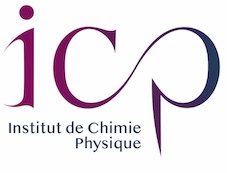The Ubiquity of High-Energy Nanosecond Fluorescence in DNA Duplexes
Résumé
During the past few years, several studies reported that a significant part of the intrinsic fluorescence of DNA duplexes decays with surprisingly long lifetimes (1-3 ns) at wavelengths shorter than the ππ* emission of their monomeric constituents. This High-Energy Nanosecond Emission (HENE), hardly discernible in the steady-state fluorescence spectra of most duplexes, was investigated by time-correlated single photon counting. The ubiquity of HENE contrasts with the paradigm that the longest-lived excited states correspond to low-energy excimers/exciplexes. Interestingly, the latter were found to decay faster than the HENE. So far, the excited states responsible for HENE remain elusive. In order to foster future studies for their characterization, this perspective presents a critical summary of the experimental observations and the first theoretical approaches. Moreover, some new directions for further work are outlined. Finally, the blatant need for computations of the fluorescence anisotropy considering the dynamic conformational landscape of duplexes is stressed.
| Origine | Fichiers produits par l'(les) auteur(s) |
|---|


